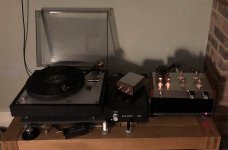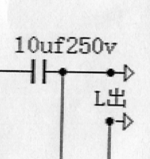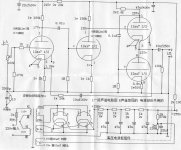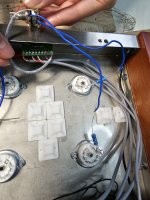Hi All,
My first attempt at building a valve pre-amp using a chinese kit was a tough challenge but a worked out rather well. I'd like to say a big thanks to everyone on diyaudio who shared their knowledge. You all really, really helped!!!
Here is the amp working:
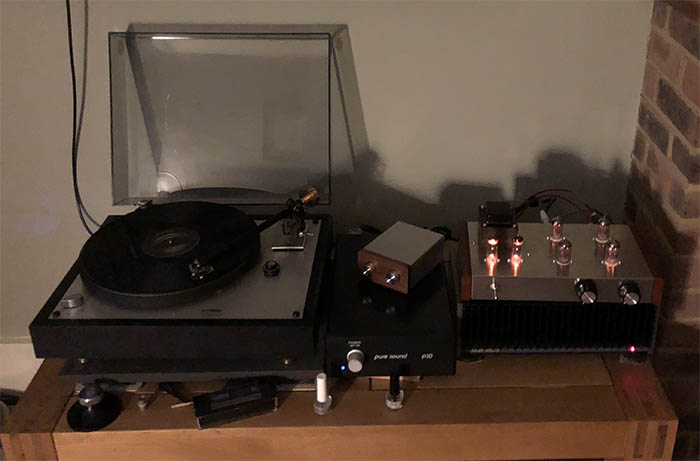
For a £100 it sounds it has a great sound and gives a richness, which I didn't get using passive pre-amp. It was tough to build, as it came with no guide and a Chinese circuit diagram, but I got there in the end. It's a bit of a fiddle to use, due to high voltage output when it's first turned on. I did get some advice to reduce that, but I've plumped with adding a manual switch to isolate the output until the device has warned up.
If you are interested in the kit, it can be found here: 12AX7 12AU7 Stereo Vacuum Tube Preamplifier DIY Kit Shigeru Wada Japan Circuit 325646489355 | eBay
or in EU, here: New version DIY kit 12AX7+12AU7+6Z4 vacuum tube preamplifier kit tube AMP | eBay
Here is my guide on building it. So far no electric shocks or amps blowing but with that said, if you undertake building the kit, I take no responsibility. Also there are some high voltages, so be VERY CAREFUL!
I am running this on 240V in the uk
Hope it all works for you.
thanks
Phill
My first attempt at building a valve pre-amp using a chinese kit was a tough challenge but a worked out rather well. I'd like to say a big thanks to everyone on diyaudio who shared their knowledge. You all really, really helped!!!
Here is the amp working:
For a £100 it sounds it has a great sound and gives a richness, which I didn't get using passive pre-amp. It was tough to build, as it came with no guide and a Chinese circuit diagram, but I got there in the end. It's a bit of a fiddle to use, due to high voltage output when it's first turned on. I did get some advice to reduce that, but I've plumped with adding a manual switch to isolate the output until the device has warned up.
If you are interested in the kit, it can be found here: 12AX7 12AU7 Stereo Vacuum Tube Preamplifier DIY Kit Shigeru Wada Japan Circuit 325646489355 | eBay
or in EU, here: New version DIY kit 12AX7+12AU7+6Z4 vacuum tube preamplifier kit tube AMP | eBay
Here is my guide on building it. So far no electric shocks or amps blowing but with that said, if you undertake building the kit, I take no responsibility. Also there are some high voltages, so be VERY CAREFUL!
I am running this on 240V in the uk
Hope it all works for you.
thanks
Phill
Attachments
Last edited:
Hi All,
My first attempt at building a valve pre-amp using a chinese kit was a tough challenge but a worked out rather well. I'd like to say a big thanks to everyone on diyaudio who shared their knowledge. You all really, really helped!!!
Here is the amp working:

For a £100 it sounds it has a great sound and gives a richness, which I didn't get using passive pre-amp. It was tough to build, as it came with no guide and a Chinese circuit diagram, but I got there in the end. It's a bit of a fiddle to use, due to high voltage output when it's first turned on. I did get some advice to reduce that, but I've plumped with adding a manual switch to isolate the output until the device has warned up.
If you are interested in the kit, it can be found here: 12AX7 12AU7 Stereo Vacuum Tube Preamplifier DIY Kit Shigeru Wada Japan Circuit 325646489355 | eBay
or in EU, here: New version DIY kit 12AX7+12AU7+6Z4 vacuum tube preamplifier kit tube AMP | eBay
Here is my guide on building it. So far no electric shocks or amps blowing but with that said, if you undertake building the kit, I take no responsibility. Also there are some high voltages, so be VERY CAREFUL!
I am running this on 240V in the uk
Hope it all works for you.
thanks
Phill
I really like your wright up about the China diy amps. Nice work
Weird
As of pghunt´s build: congratulations, happy it works well

And it definitely looks good
Hello all,
I build this pre-amp, as my first "comeback" to 35 years ago hobby. But I never touched tubes before ;-).
I connected the final assembled pre-amp product to my old Parasound HCA-750A and find out that it triggers Parasound "self-protect" if I'm run it in normal mode. If I reduce the input volume reducer under 15% it running find OK.
I already change the output resistor to 10K (that improves a bit stability) and now looking for additional improvement.
I build this pre-amp, as my first "comeback" to 35 years ago hobby. But I never touched tubes before ;-).
I connected the final assembled pre-amp product to my old Parasound HCA-750A and find out that it triggers Parasound "self-protect" if I'm run it in normal mode. If I reduce the input volume reducer under 15% it running find OK.
I already change the output resistor to 10K (that improves a bit stability) and now looking for additional improvement.
Thanks for posting this! I just started on this "kit" and have several questions. Kit is in quotes because this is very far from a Heathkit to put it mildly.
1. I assume I can connect a turntable to this, but don't pre-amps for turntables have some kind of "RIAA equalization"? I don't see that on the diagram and it has 4 different inputs anyway with no signs of one being for phono. My turntable has in internal pre-amp that can be switched in and out, but not all do and I wanted to not use it if possible.
2. It also has no tone controls at all. Is there an easy way or even semi-easy way to add them?
3. This has me a bit concerned:
you’ll see a spike in output voltage of about 150V as the tubes warm up. This does settle to zero but 150V would blow your power amp if connected.
I am not sure how this is possible, the output runs through a capacitor:
It should not be possible to see ANY DC voltage on the output, let alone 150 volts Are we talking DC or an AC pulse? This is feeding a Douk 5 watt tube amp I just finished, so maybe 150 volts briefly won't hurt it, not sure
Are we talking DC or an AC pulse? This is feeding a Douk 5 watt tube amp I just finished, so maybe 150 volts briefly won't hurt it, not sure 
1. I assume I can connect a turntable to this, but don't pre-amps for turntables have some kind of "RIAA equalization"? I don't see that on the diagram and it has 4 different inputs anyway with no signs of one being for phono. My turntable has in internal pre-amp that can be switched in and out, but not all do and I wanted to not use it if possible.
2. It also has no tone controls at all. Is there an easy way or even semi-easy way to add them?
3. This has me a bit concerned:
you’ll see a spike in output voltage of about 150V as the tubes warm up. This does settle to zero but 150V would blow your power amp if connected.
I am not sure how this is possible, the output runs through a capacitor:
It should not be possible to see ANY DC voltage on the output, let alone 150 volts
Attachments
Two series 12v zeners will solve your problem across the output. Its quite normal on cathode followers if the tubes are warm and HT is applied. The output will jump to HT/2 before the output coupling cap charges up. Changing the output cap value may affect the bass response depending on you amp input impedance.
Last edited:
My other question: This pre-amp does not contain either any tone controls at all nor anything that I can see that looks like a specific phono input with RIAA equalization.
It has 4 sets of inputs that feed into a 4-way switch, so it either has RIAA on all of them or none.
I am not sure how important that is, right now my turntable has a pre-amp built in, but I am guessing many do not.
This is the overall diagram minus the switch. I may try and engineer in a tone control or two. I have been a ham forever but this kind of thing is new to me and so far very fun Thanks all for the help!
Thanks all for the help!
It has 4 sets of inputs that feed into a 4-way switch, so it either has RIAA on all of them or none.
I am not sure how important that is, right now my turntable has a pre-amp built in, but I am guessing many do not.
This is the overall diagram minus the switch. I may try and engineer in a tone control or two. I have been a ham forever but this kind of thing is new to me and so far very fun
Attachments
Tone controls?
Use different speakers.
Adjust the speaker level controls (if there are any).
Change where you put the speakers in the room (in the corner on the floor, out in the middle on a stand; are the 2 most extreme examples).
Aim them straight at your ears.
Aim them outward 1/2 way toward the side walls.
Aim them to cross in front of your ears.
Treat your room: rugs, traps, drapes, windows (no, not windows and mirrors).
If the power amp is solid state, insert a resistor in series with the hot (+) output connection to the speaker + input (try 3, 5, 7 Ohms).
If the power amp is a tube amp, especilly if it has a low to medium damping factor, connect the loudspeaker to a different output tap (like an 8 Ohm speaker on the 4 Ohm tap).
If the tube amp has high damping factor, use the same trick as the solid state amp, use a series 3, 5, or 7 Ohm resistor).
Do not expect any of the above to work like you want them to.
If they do work for you, great!
. . . But do not expect tone controls to work like you want them to either.
If they do work for you, great!
Use different speakers.
Adjust the speaker level controls (if there are any).
Change where you put the speakers in the room (in the corner on the floor, out in the middle on a stand; are the 2 most extreme examples).
Aim them straight at your ears.
Aim them outward 1/2 way toward the side walls.
Aim them to cross in front of your ears.
Treat your room: rugs, traps, drapes, windows (no, not windows and mirrors).
If the power amp is solid state, insert a resistor in series with the hot (+) output connection to the speaker + input (try 3, 5, 7 Ohms).
If the power amp is a tube amp, especilly if it has a low to medium damping factor, connect the loudspeaker to a different output tap (like an 8 Ohm speaker on the 4 Ohm tap).
If the tube amp has high damping factor, use the same trick as the solid state amp, use a series 3, 5, or 7 Ohm resistor).
Do not expect any of the above to work like you want them to.
If they do work for you, great!
. . . But do not expect tone controls to work like you want them to either.
If they do work for you, great!
Last edited:
Thank you very much for the extremely useful tips. Please may I ask if the circuit diagram shared for the left channel, when you mentioned that it is to be replicated, it means that the same connections are to be super imposed on the other set of 12ax7 and 12au7?
Meaning that one pair of 12ax7 and 12 au7 is used for the left channel while another pair is used for the right.
For example, I have attached an image of me connecting the left channel coming out of the "volume control" to pin 2 of 12ax7 and the right to pin 2 of the second 12ax7.
Thank you all in advance for your kind advice.
Meaning that one pair of 12ax7 and 12 au7 is used for the left channel while another pair is used for the right.
For example, I have attached an image of me connecting the left channel coming out of the "volume control" to pin 2 of 12ax7 and the right to pin 2 of the second 12ax7.
Thank you all in advance for your kind advice.
Attachments
- Home
- Amplifiers
- Tubes / Valves
- A guide on building chinese kit from Douk Audio 12AX7 12AU7 Stereo Vacuum Tube Preamp
